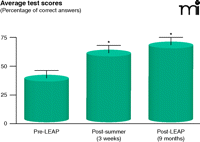LEAP! Launch into Education About Pharmacology: Transforming Students into Scientists
We have developed a science enrichment program at Duke for public high school students in North Carolina during the summer before they enter their junior or senior year. LEAP (Launch into Education About Pharmacology) is an effort to promote science literacy and an interest in pursuing a career in science. Previously, we had showed that the use of topics relevant to students (i.e., drugs) to teach basic concepts of biology and chemistry produced a significant improvement in performance in these courses (1, 2). Thus, with a Student Science Enrichment Award (SSEP) from the Burroughs Wellcome Fund, we developed LEAP.
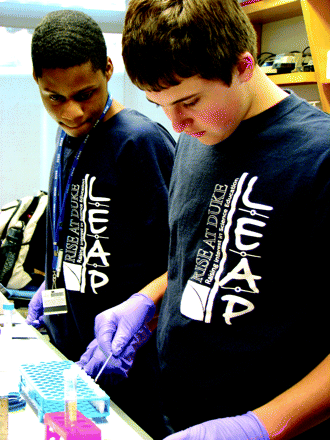
Introduction
LEAP is a high school enrichment program that combines a three-week summer course in pharmacology at Duke along with a research experience that extends into the following school year. The program culminates in students presenting their research projects at local and state science fairs. An additional goal of LEAP is to involve university undergraduate and graduate students and post-docs in mentoring the high school students in the classroom and in the laboratory. Recently, we reported pedagogical details of the three-week summer pharmacology course and analyzed the overall impact of LEAP over the past two years (3). Here, we provide a summary of the LEAP research component and its impact on student learning and interest in science. We hope that LEAP can become a model for all pharmacology programs in their efforts to bring pharmacology to the high school level.
LEAP Participants
For each of the past three summers, we accepted twenty-four rising tenth- and eleventh-grade students (out of about 100 applicants), from seven counties surrounding Duke University to participate, in LEAP. About eighty percent of the students comprised underrepresented minorities. In addition, we hired three undergraduate students to serve as teaching assistants and three graduate students or postdocs to serve as instructors. All six of our mentors, selected from Duke and the University of North Carolina, worked to guide the high school students throughout the summer and following year.
LEAP Summer Course
The three-week summer course introduced students to basic biology and chemistry concepts in the context of pharmacology. The daily schedule included didactic instruction (<1 hour) followed by a variety of active-learning activities (i.e., small group research and presentations), debates, field trips, and hands-on laboratory experiments. [See Table 1 for a sample of the syllabus. For a more complete discussion of the summer pharmacology course, see (3).]
Sample Syllabus from the LEAP Summer Course
LEAP Research Activities
The LEAP learning program provides high school participants with the opportunity to select a topic in pharmacology for development into an authentic research project. Given the limited time that high school students can devote to a research experience, we formulated eight research protocols, adapted from a variety of published sources, that would allow students to address their particular research questions over a period that included three afternoons during the summer course and five Saturday afternoons during the school year. Our eight “method templates” included molecular, cellular, and behavioral approaches that could be used to examine pharmacology-related questions (Table 2).
Method Templates Developed for LEAP High School Student Researcha
During the summer course, we introduced the students to practical issues in laboratory science (e.g., lab safety, micropipetting, serial dilutions, and statistical analysis) and familiarized them with the actual method template they would apply during the research phase of LEAP. Each method template includes: 1) an overview and list of major concepts; 2) detailed learning objectives; 3) a suggested timeline for implementation; 4) a materials list; 5) a description of set-up and procedures; and 6) an example of data analysis using representative student data. In a few cases, specific equipment is required, such as a flow cytometer or PCR machine, but most resources are otherwise common in university research labs.
Students Become Scientists
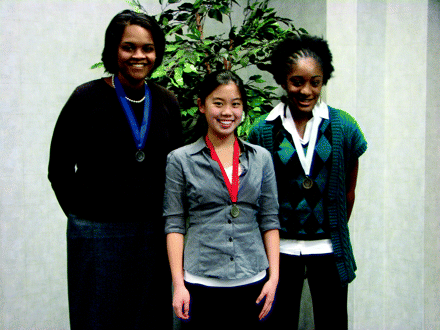
To begin the summer course, we asked students to formulate, in writing, pharmacology-related questions based on their personal interests. LEAP mentors reviewed the submitted proposals and accordingly advised students to refine and focus hypotheses; students typically spent three hours in literature review during this phase. Mentors helped students to plan projects with regard for the most appropriate method template that would accommodate the given research question (Table 2). For example, a student who expressed an interest in fetal alcohol exposure and brain damage was directed to the acoustic startle test in zebrafish embryos; this method template allowed the student to determine whether the anti-oxidant vitamin B3 could prevent ethanol-induced neuromast damage. Because students increase common knowledge when they work collaboratively (4), those LEAP students who shared a common method template were arranged into small groups, with each student independently following his or her own research question. For example, one group consisted of four students using the cancer cell migration template (Table 2) to address the following individual projects:
-
Effect of curcumin (from tumeric) in inhibiting human lung cell migration;
-
Effect of vitamin D in inhibiting bone cancer (osteosarcoma) cell migration;
-
Effect of naringenin (from grapefruit) to inhibit liver cell migration;
-
Effect of U-fucoidan (from seaweed) in inhibiting breast cancer cell migration.
Over the academic year following the summer course, students spent six hours on each of five to eight Saturdays at Duke, working in groups and with mentors. Collaboration was key to the sharing of control samples and other limited resources. On the last two Saturdays, mentors helped students as necessary (i.e., ranging from data analysis to PowerPoint skills) to prepare for both the written and oral presentations (10 minutes with questions) that were required at their local and state science competitions. In this way, the LEAP program reflects the extensive scope of true biomedical research. LEAP students do not have projects “handed” to them, but must rather learn, in a learning environment appropriate to their age, how to formulate and answer their own questions and communicate their research experience.
LEAP Mentors Learn, Too!
The LEAP program was designed not only with high school participants in mind, but also to foster the development of future science teachers. Undergraduate, graduate, and postgraduate trainees who were selected to mentor LEAP students received a stipend ($2000–$3000) for the summer course and subsequent research phase. Each year, we held a workshop for the three teaching assistants and three instructors a few weeks prior to the summer course. As faculty with experience in science education, we explored with these instructors-in-training the pedagogical concepts of presenting pharmacology to high school students, and we guided all mentors in the methods of inquiry-based teaching practices. The undergraduate students earned independent study credit, and as a condition of their stipend and course grade, they wrote about the research activities of their students and how the method templates were adapted for execution of student research projects. The graduate and postdoctoral trainees participated in the design of course materials, advised undergraduate mentors, and contributed to the design and implementation of method templates. Several of the stipendiary mentors from our LEAP programs have gone on to take teaching positions in high school and university settings.
Measures of Program Impact
Two major areas in which LEAP high school students were assessed were content knowledge and interest in science. At the beginning of the summer LEAP course, we administered a ten-item multiple choice test to assess student knowledge of basic concepts in biology and chemistry; this test was given again at the end of the summer course, and again, nine months later, when students had presented at the science fairs. Following the LEAP summer course, there was a significant increase in students’ basic knowledge in biology and chemistry, and moreover, this increased knowledge was maintained over the course of the following year as students pursued their research projects [(Figure 1); see also (3)].
LEAP increases basic biology and chemistry knowledge among high school student participants. Content knowledge in basic biology and chemistry was assessed among high school students accepted into the LEAP program before and after exposure to the three-week pharmacology curriculum and nine-month research portion of the LEAP program (*p<0.05 compared to Pre-LEAP, ANOVA, and Tukey’s Multiple Comparison Test; n = 70).
“Instructors benefited from guiding students to increase their knowledge of pharmacology and use this new-found knowledge
in the laboratory….
The experience of LEAP has helped me pursue other teaching opportunities and will ultimately help me obtain a teaching faculty
position.”
–Sarah…graduate student and LEAP Instructor
More than half of all students indicated that the opportunity to do independent research was the highlight of the program (see Box), and the impact of their LEAP research was apparent at the science fair competitions. Among seventy LEAP students, fifty-two individual awards and honors were earned! (Two forty-thousand-dollar scholarships were earned with additional travel support to attend the annual AAAS meeting in Washington DC, where both awardees presented their LEAP projects.) Subsequent to the LEAP program, students have manifested high levels of interest in science; ten alumni have participated in additional science enrichment opportunities and six have earned awards in other science competitions. When assessed at the end of the LEAP program, about 75% of students expressed an increased interest (compared to before the LEAP program) in learning science, taking more science courses, and considering a career in science. Some even expressed an interest in a career in pharmacology!
Student Opinions
High school students who completed the LEAP program were asked, “What did you learn in this program about doing science or being a scientist?”
How a scientist thinks, how a small step can be a big achievement, more about the body and science in general.
Science takes patience and dedication.
I learned more about the scientific method and was able to take my understanding of science to the next level by conducting my own experiment.
I learned about the success of science as well as the difficulties of conducting experiments. It was a wonderful experience.
I have learned more about conducting experiments and analyzing data. I have also learned a lot about how our bodies work and how drugs affect them and are administered.
I learned that being a scientist can be hard at times but can also be fun.
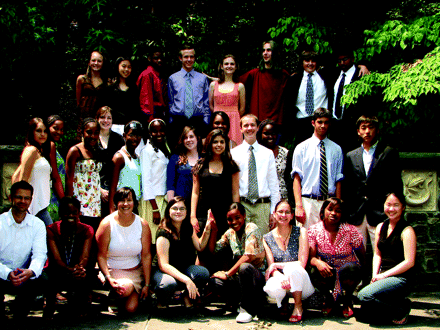
Life after LEAP
We hope that our LEAP students will develop the investigative skills necessary to make informed decisions about science, to have meaningful experiences in science, and to consider science-related careers (especially in pharmacology). Thus, we will follow students for several years after program completion to determine whether their LEAP-inspired interest in science actually translates into a relevant college degree. It is anticipated that participation in informal science education opportunities, with authentic research experiences such as those offered in the LEAP program, will augment the number of high school students that pursue careers in science.
LEAP for All: What Can You Do?
The LEAP program is intended as a model for use by university pharmacology programs (and other disciplines as well). We hope that this report will help inspire other pharmacology departments to develop their own LEAP programs, and to facilitate this, we encourage the use of our website (www.rise.duke.edu/leap), which includes a photo story that documents elements of the LEAP program for adaptation.
- Copyright © 2009
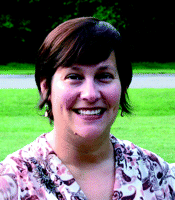
Suzanne S. Sikes, PhD, is a former Research Scientist with RISE (Raising Interest in Science Education) in the Department of Pharmacology at Duke University Medical Center, Durham, NC. She is currently pursuing a Master of Arts in Teaching degree at Duke. E-mail sikes005{at}mc.duke.edu.
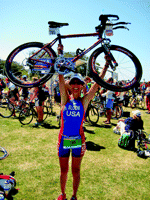
Rochelle D. Schwartz-Bloom, PhD, is Professor of Pharmacology, Director of RISE, and Director of Undergraduate Studies in Pharmacology at Duke University Medical Center, Durham, NC. In September 2009, she earned a bronze medal in the aquathlon (run, swim, run) and placed sixteenth in the triathlon (swim, bike, run) at the World Championships in Australia. E-mail schwa001{at}duke.edu.

